Hybridwerx
Product design for augmented reality camera glasses
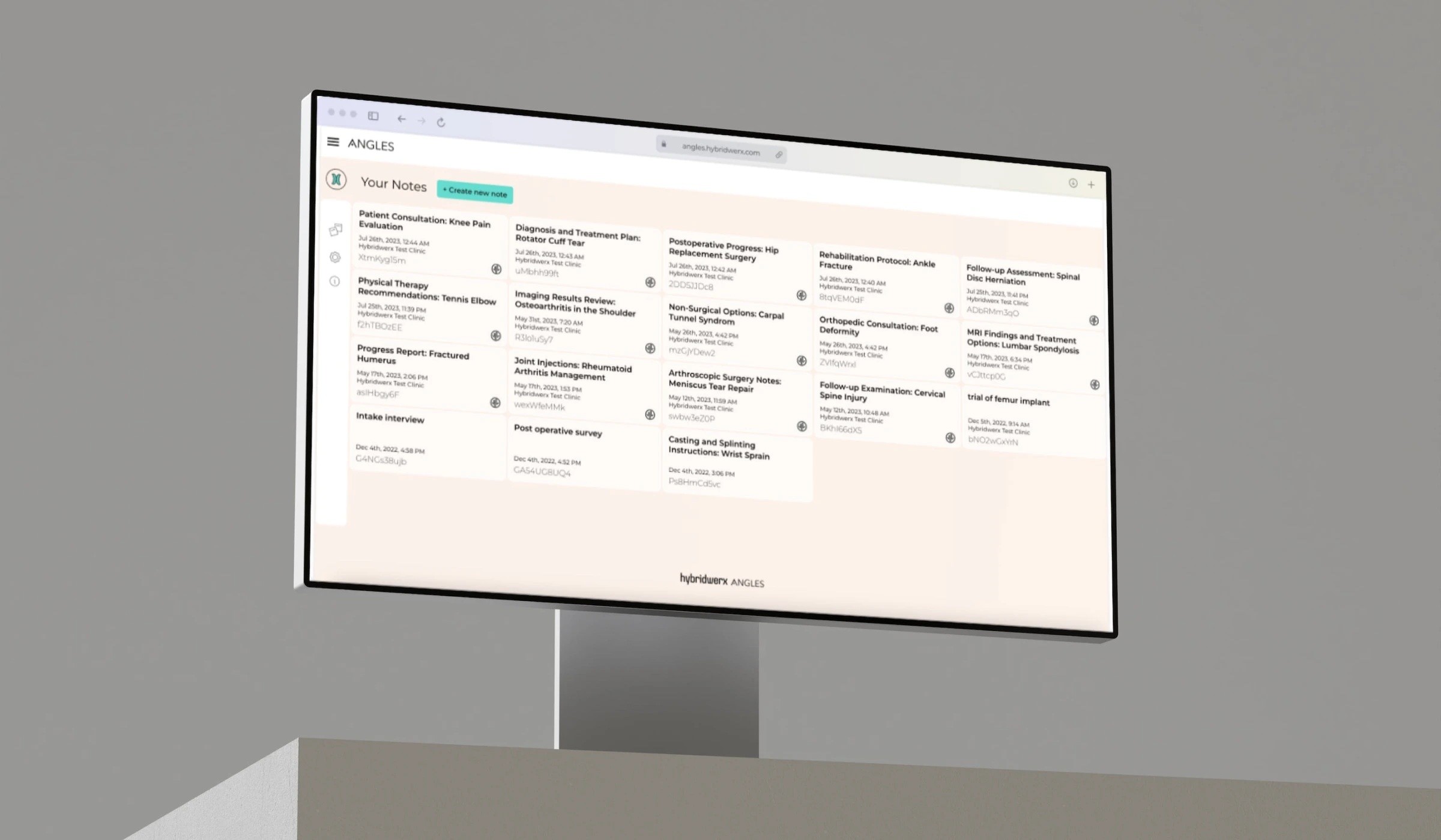

Role
Product Design Lead
Industry
Augmented Reality
Duration
1 Year
Problem
Hybridwerx needed to pivot from their main display-focused eyewear, to create a set of glasses with a built-in camera and no display; I was asked to lead the design of this new product, leveraging the company's existing resources and IP.
Problem
Hybridwerx needed to pivot from their main display-focused eyewear, to create a set of glasses with a built-in camera and no display; I was asked to lead the design of this new product, leveraging the company's existing resources and IP.
Design Process
I began with a briefing from the product owner, and completed a detailed analysis of the competitive landscape, focusing on other products with similar hardware, and the relevant use cases.
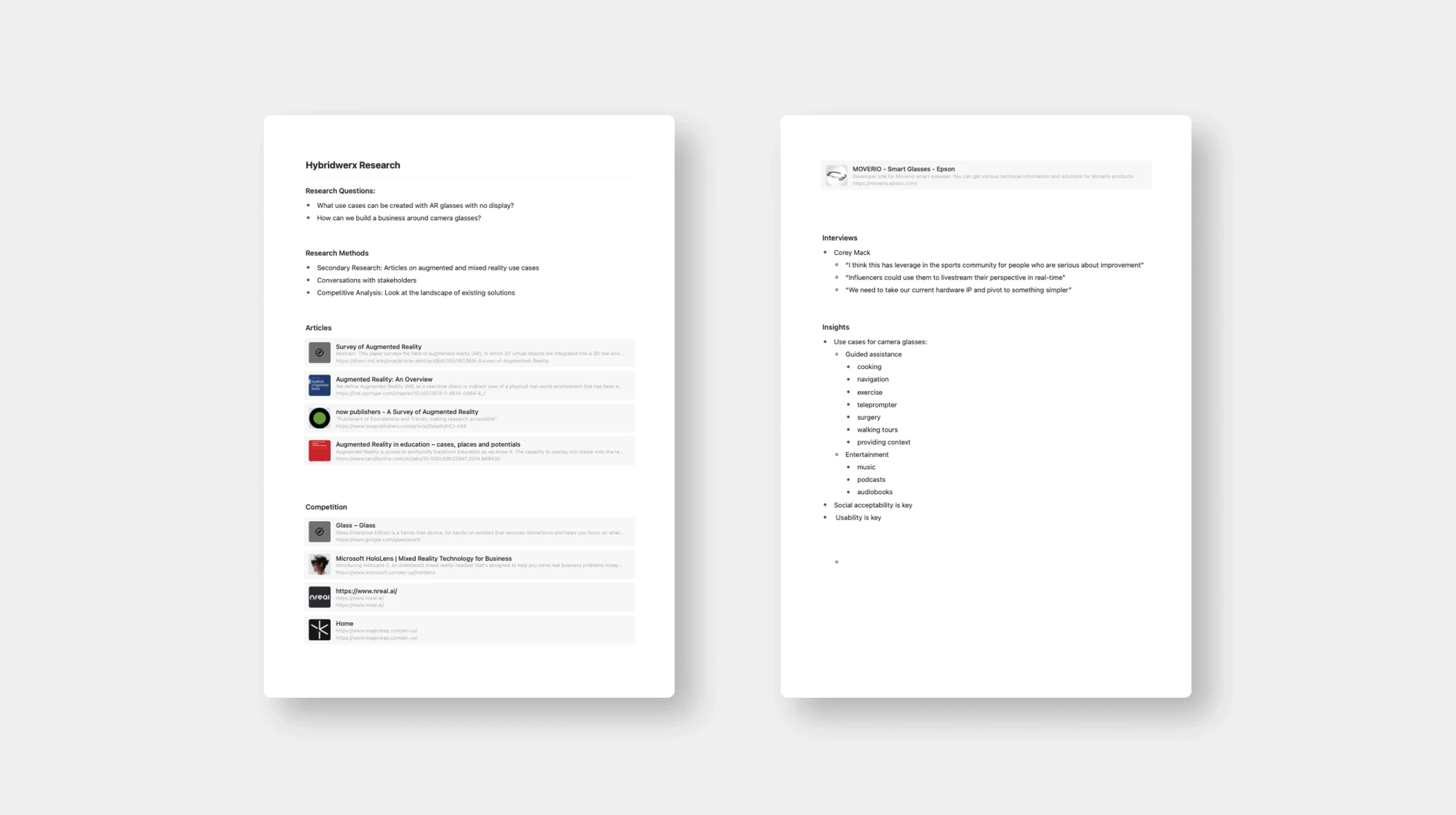

I created a map of potential use cases to understand the leverage points of our technology in context.
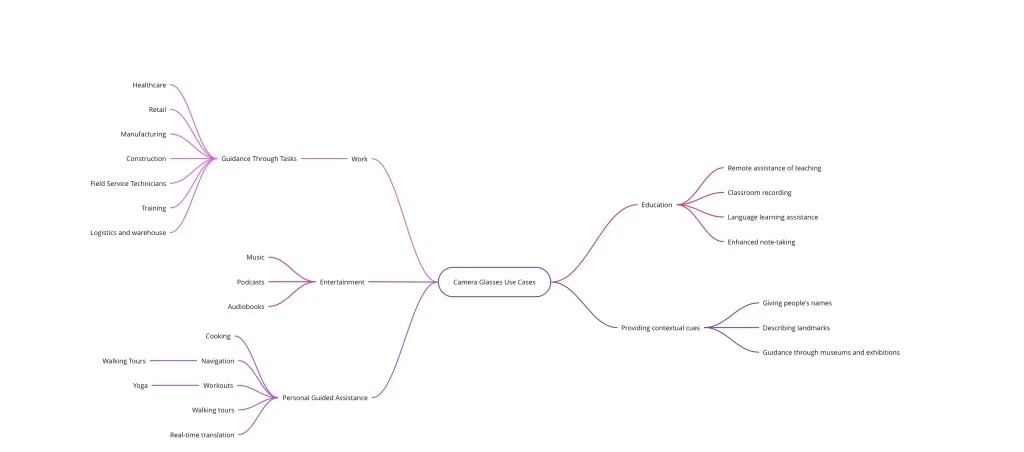

Challenge
I created a Venn diagram to understand the relationship between hardware and potential use cases for Angles. This diagram illustrates the minimum hardware requirements for each use case, and the ellipses represent individual hardware components.
Challenge
I created a Venn diagram to understand the relationship between hardware and potential use cases for Angles. This diagram illustrates the minimum hardware requirements for each use case, and the ellipses represent individual hardware components.
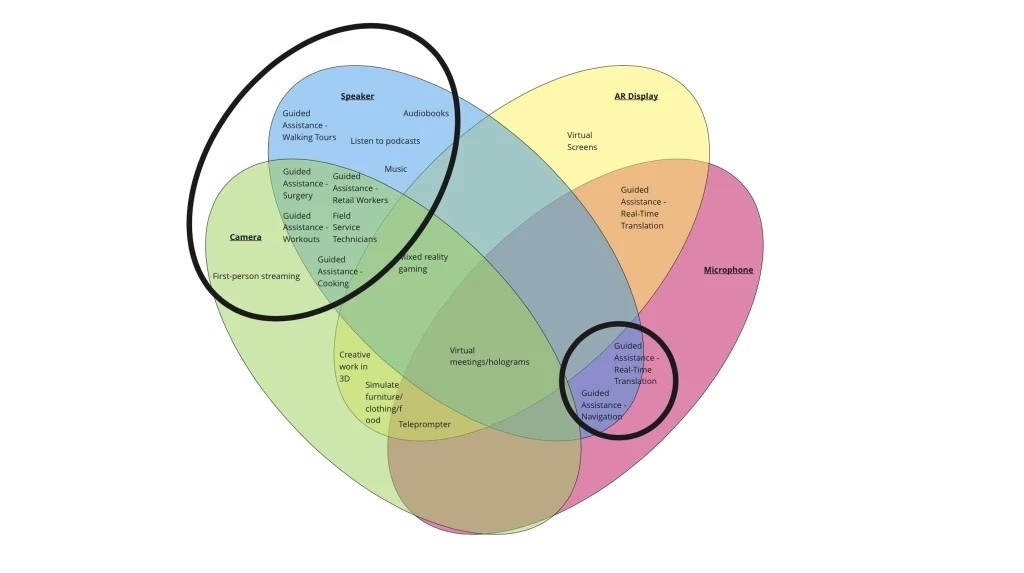

Design Guidelines
Based on my research, I established the following principles to guide my work on the project:
1. Relevance: Ensure that Angles is useful in ways that cannot be replicated by existing devices.
2. Social Acceptability: Angles should be socially acceptable to use in its relevant context.
3. Scalability: Begin with a small, well-defined use case and expand from there, without compromising usability.
4. Technological Capacity: Account for the limitations of the Angles’ hardware to design the best possible user experience.
5. Usability: Effectively integrate the hardware and software to create a smooth, seamless experience for the user.
Design Guidelines
Based on my research, I established the following principles to guide my work on the project:
1. Relevance: Ensure that Angles is useful in ways that cannot be replicated by existing devices.
2. Social Acceptability: Angles should be socially acceptable to use in its relevant context.
3. Scalability: Begin with a small, well-defined use case and expand from there, without compromising usability.
4. Technological Capacity: Account for the limitations of the Angles’ hardware to design the best possible user experience.
5. Usability: Effectively integrate the hardware and software to create a smooth, seamless experience for the user.
Narrowing Down Options
I chose live coaching as the most promising use case to begin with as it addresses several of the guidelines established earlier. It circumvents the issues around social acceptability, introduces something that can't be done with a hands-on device, and it works within the relevant hardware limitations. Furthermore, the COVID-19 pandemic was causing an increase in remote work, which fits perfectly within our scope.
I created a set of specific hardware recommendations for the eyewear based on the outlined use cases including camera and frame specifications. I pitched the idea to the CEO, and got it approved by him.
Narrowing Down Options
I chose live coaching as the most promising use case to begin with as it addresses several of the guidelines established earlier. It circumvents the issues around social acceptability, introduces something that can't be done with a hands-on device, and it works within the relevant hardware limitations. Furthermore, the COVID-19 pandemic was causing an increase in remote work, which fits perfectly within our scope.
I created a set of specific hardware recommendations for the eyewear based on the outlined use cases including camera and frame specifications. I pitched the idea to the CEO, and got it approved by him.
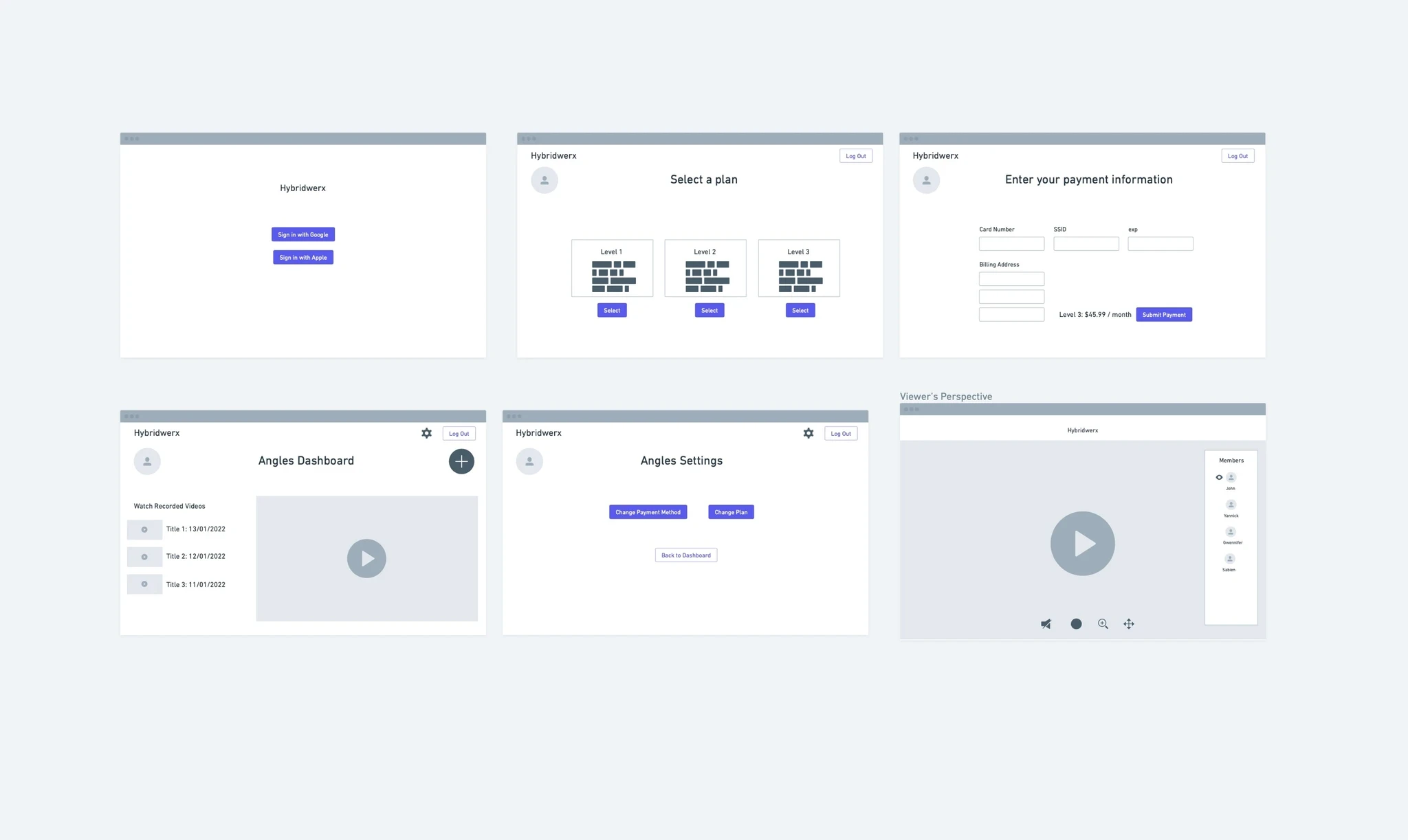

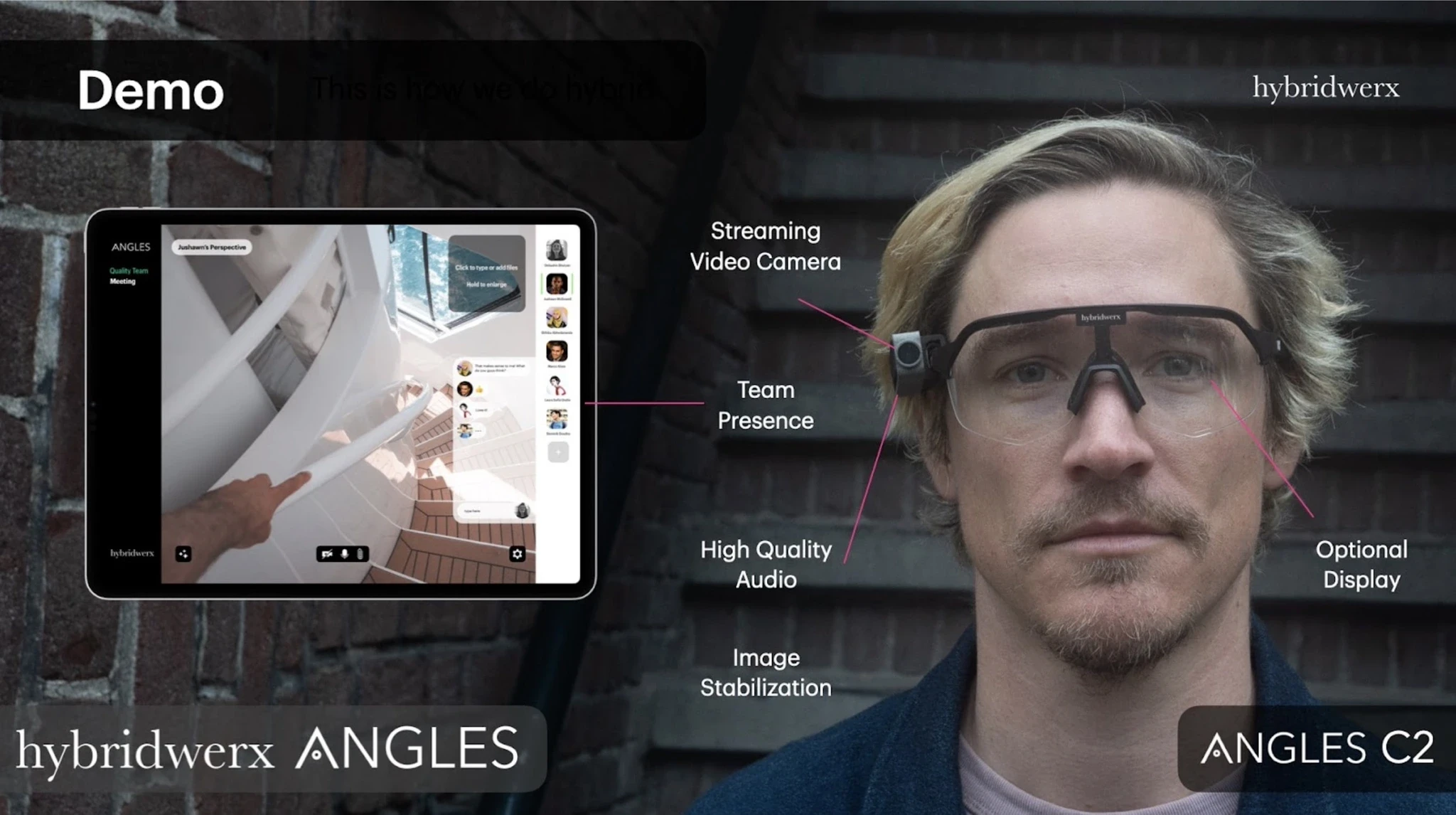

Solutions
Solutions
Angles represented an opportunity to innovate in the field of “remote work”, to move beyond video chats and into hands-on jobs and athletics, where holding a camera is inconvenient and often dangerous. Angles enables low-skilled workers to stream their field of vision directly to highly-skilled remote workers and receive instructions in real time.
The ‘Angles ‘app was designed for both mobile and iPad and was approved for the Google Play store in 2022.
Angles represented an opportunity to innovate in the field of “remote work”, to move beyond video chats and into hands-on jobs and athletics, where holding a camera is inconvenient and often dangerous. Angles enables low-skilled workers to stream their field of vision directly to highly-skilled remote workers and receive instructions in real time.
The ‘Angles ‘app was designed for both mobile and iPad and was approved for the Google Play store in 2022.
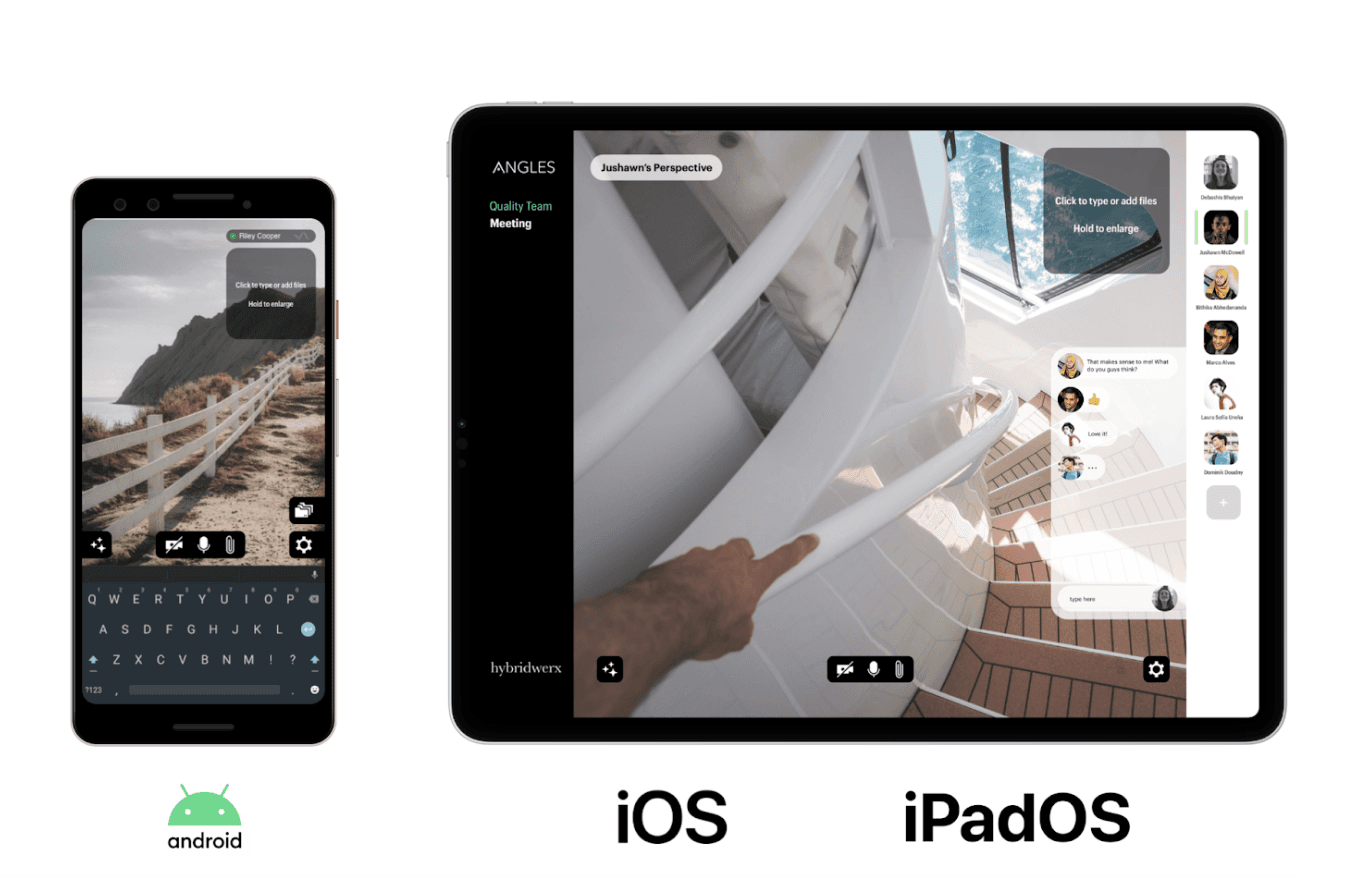

In contrast to products by Microsoft and GoPro, Angles uses first-person streaming to create a “tandem approach” to virtual work.
In contrast to products by Microsoft and GoPro, Angles uses first-person streaming to create a “tandem approach” to virtual work.
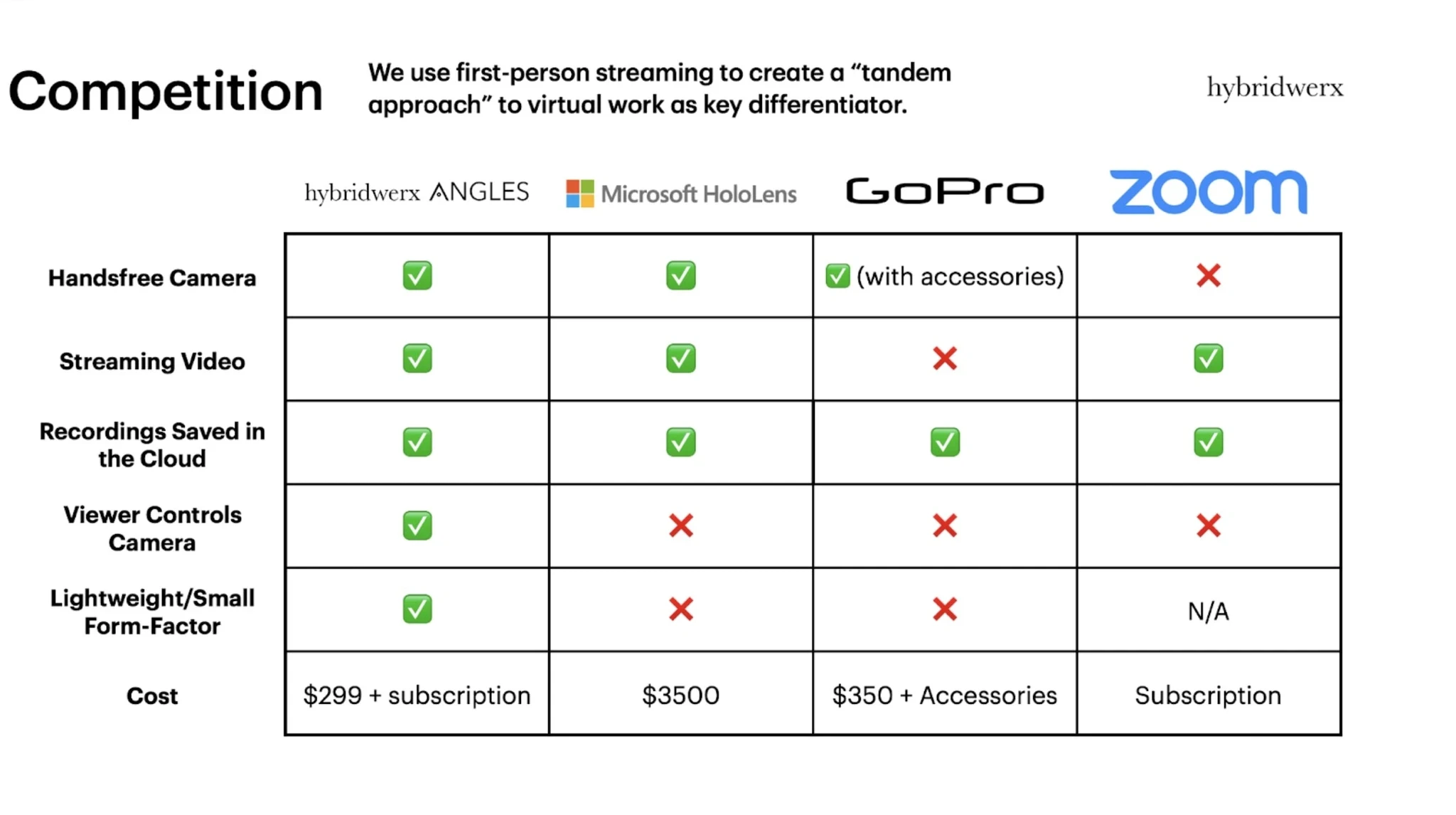

Results
I successfully designed the product with input from the CEO through to the latest prototype in 2022. On this basis, Hybridwerx was accepted into the ‘RIT’ incubator. $250,000 of funding has been agreed by the New York State Venture Capital Fund (matched funding) for the product. The CEO is now in the process of raising $2m in Series A for this product.
Results
I successfully designed the product with input from the CEO through to the latest prototype in 2022. On this basis, Hybridwerx was accepted into the ‘RIT’ incubator. $250,000 of funding has been agreed by the New York State Venture Capital Fund (matched funding) for the product. The CEO is now in the process of raising $2m in Series A for this product.
Other projects
Julian Chiesa
Copyright 2025 by Julian Chiesa
